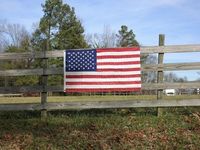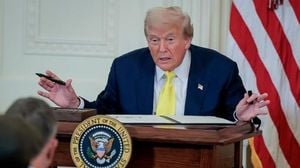BioNTech’s stock took a hit on Wednesday, August 27, 2025, after the U.S. Food and Drug Administration (FDA) made a significant change to the nation’s COVID-19 vaccine policy. In a move that marks a clear shift from the pandemic’s earlier urgency, the FDA ended its broad emergency authorization for COVID-19 vaccines, narrowing their use to only those at highest risk: people aged 65 and older, and those aged 5 through 64 with at least one underlying health condition.
This decision comes at a time when COVID-19 cases are once again ticking upward. According to the Centers for Disease Control and Prevention (CDC), the week ending August 16 saw a nearly 10% increase in positive COVID tests reported to the agency, along with a 1.2% rise in emergency department visits related to the virus. While these numbers are a far cry from the peaks of previous years, they’re enough to keep COVID-19 in the headlines and on the minds of public health officials.
Alongside the rollback in vaccine authorization, the FDA approved a new booster shot developed by Pfizer and BioNTech that specifically targets the LP.8.8 strain of the coronavirus, which is currently the most prevalent in the U.S. This booster is now set to ship immediately to pharmacies, hospitals, and clinics across the country, according to a joint announcement from Pfizer and BioNTech. The companies also noted that, to date, more than 5 billion doses of their COVID shot have been shipped globally—a staggering figure that underscores the massive scale of the vaccination effort since 2020.
But the new rules mean the booster will be available only to those who fall within the FDA’s revised eligibility criteria. Robert F. Kennedy Jr., who now heads the Department of Health and Human Services, clarified the new approach in a post on X (formerly Twitter): "These vaccines are available for all patients who choose them after consulting with their doctors." He also emphasized that the days of broad vaccine mandates are over, stating, "The American people demanded science, safety and common sense. This framework delivers all three."
For Kennedy, the policy shift fulfills a series of promises: ending COVID vaccine mandates, keeping shots available for those who want them, demanding placebo-controlled studies from vaccine makers, and officially ending the COVID emergency. In his words, "I promised to end Covid vaccine mandates while keeping shots available to those who want them, demand placebo-controlled studies from vaccine makers and end the Covid emergency."
The Department of Health and Human Services further explained the transition, stating, "The transition is from a circumstance where vaccines have been marketed under both the emergency use pathway and the traditional approval pathway, to a circumstance where the COVID-19 vaccines are now marketed only under the traditional approval pathway. This is not a removal of COVID-19 vaccines from the market." In other words, the vaccines aren’t disappearing—they’re simply moving from emergency status to standard regulatory approval, but with a much narrower focus on those most at risk.
This regulatory change also affects the products of Moderna and Novavax, not just Pfizer and BioNTech. All three companies’ immunizations are now approved only for those at high risk, reflecting a broader consensus among regulators that the era of mass vaccination for COVID-19 in the U.S. has come to a close. The emergency use authorizations that once justified sweeping mandates during the Biden administration have been rescinded, and the vaccines are now being sold through the regular, traditional approval process.
While the new booster is ready to roll out, questions remain about how easily patients will be able to access it—and whether insurers will cover the cost. Kennedy’s statement that shots will be available "to all patients who choose them after consulting with their doctors" leaves open the practical details of distribution and payment, which could become sticking points for some Americans seeking the new booster this fall.
From a business perspective, the news isn’t exactly rosy for vaccine makers. Analysts polled by FactSet expect Pfizer to report a combined $4.03 billion in sales for the booster shot in the third and fourth quarters of 2025. That’s a substantial sum, but it’s also a sharp decline—down 16% from the same period in 2024, and a whopping 42% drop from 2023. The shrinking eligible pool, paired with waning public urgency, is clearly taking its toll on demand.
Analyst Mani Foroohar of Leerink Partners recently lowered his expectations for both flu and COVID-19 vaccine sales in the upcoming season. He cited lower vaccine trends and ongoing regulatory uncertainties, particularly regarding the future of messenger RNA (mRNA) vaccine technology, which underpins both Pfizer-BioNTech’s Comirnaty and Moderna’s COVID-19 shots. "We note that for most mRNA vaccine manufacturers, the development strategy of both a combo COVID/Flu vaccine and a standalone flu vaccine remains unclear, and we expect regulatory events, clinical data, and commercial contracting dynamics to drive strategic decisions," Foroohar wrote in a note to clients.
In a sign of the shifting landscape, Foroohar also lowered his price target on Moderna stock from 18 to 15, reflecting diminished expectations. Still, not all analysts share a gloomy outlook: Leerink’s Daina Graybosch continues to rate BioNTech stock as an "outperform," suggesting that there’s still confidence in the company’s long-term prospects despite the recent turbulence.
For many Americans, the end of emergency use authorization marks a symbolic turning point. The COVID-19 vaccines, once the centerpiece of a national mobilization effort and the subject of heated political debate, are now part of the regular toolkit for managing infectious diseases—available for those who need them most, but no longer a universal requirement. The Department of Health and Human Services made it clear: "This is not a removal of COVID-19 vaccines from the market." Instead, it’s a recalibration, one that reflects both scientific data and shifting public sentiment.
Whether this new framework will satisfy everyone is another matter entirely. Some public health advocates argue that limiting vaccines to high-risk groups could leave others vulnerable, especially as new variants continue to emerge. Others, weary of mandates and pandemic restrictions, welcome the change as overdue. For now, Americans who want the booster will need to consult with their doctors, weigh their own risk factors, and navigate a vaccine landscape that looks very different from the one just a year or two ago.
As the booster shipments begin and the fall season approaches, the country finds itself at a crossroads: balancing the lessons of the past with the realities of the present, and forging a new path for COVID-19 management—one that aims for science, safety, and, perhaps most importantly, common sense.




